
Is a Hygienic AHU Right for Your Next Project?

Advanced Climate & Environmental Solutions for Commerce and Industry
by K-Kom
by K-Kom

Climate Technologies Corp. is proud to announce that we now represent Bioclimatic Air Systems.
Bioclimatic can design and produce a system to solve almost any air cleaning problem or need.

by K-Kom
The right climate and humidity levels con help limit the transmission of viruses, and plays an important role in protecting what matters most – our collective health and well-being.
As the COVID-19 virus, otherwise known as the coronavirus, continues to spread all over the world, it’s important for us oil to understand what we can do to limit transmission, and take action and responsibility where we can.
COVID-19 is genetically similar to SARS-CoV, a virus which spread in a similar fashion during 2002/2003. As a result of this previous pandemic, many scientific studies were carried out where the results will likely be relevant in relation to COVID-19. One study highlighted the effects of air temperature and Relative Humidity (RH) on the virus, and how this impacts its ability to survive on surfaces.
The study used two coronaviruses along with stainless steel surfaces to examine how the climate affects the virus. The rote of virus inactivation varied across different RH levels, where the greatest level of virus inactivation took place at 50% RH.
The virus had higher survival rates at both 20% and 80% RH, so it’s not simply a case of
increasing or decreasing the levels; it’s about controlling the climate to very specific parameters.
Find out more about how effective humidity control can limit viral transmission rates.
by K-Kom
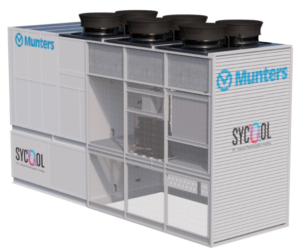
The SyCool Cooling System is a Best-in-class refrigerant based (DRY) indirect cooling solution that provides PUEs in the low 1.1-1.2 range depending on site location and operating variables.
Cooling solutions that include economizer technology should be factory made with incremental capacity options that support large or small installations, including smaller “day 1” builds that expand with demand.
Cooling is expensive! In Michigan, cooling can be over 50% of a data center’s operating expenses. Scalable cooling solutions that are factory packaged offer many advantages, including speed to market, first cost and total cost of ownership.
by K-Kom
 Climate Technologies now offers cost-effective equipment rental for temperature and humidity control through our partner Polygon.
Climate Technologies now offers cost-effective equipment rental for temperature and humidity control through our partner Polygon.
With experience from more than 20,000 projects, Polygon has the know-how and the equipment to help you work without delays while maintaining temperature and humidity requirements at the lowest possible cost.
Polygon offers a complete line of equipment along with the engineering expertise to size and integrate a system specific to your needs, allowing you to reduce energy usage while ensuring job-site dependability.
Polygon’s application knowledge can help with humidity and temperature control on jobs such as:
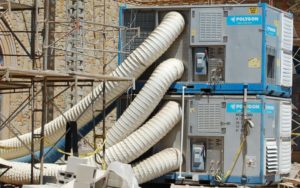 Polygon supplies as much or as little as you need. They can provide ductwork, inlet/outlet transitions, oversize blowers, high static blower units, transformers, and gas or steam-regenerated dehumidifiers.
Polygon supplies as much or as little as you need. They can provide ductwork, inlet/outlet transitions, oversize blowers, high static blower units, transformers, and gas or steam-regenerated dehumidifiers.
Equipment can be adapted to a range of voltages. Generally, equipment is provided on skids with forklift slots.
Minimum rental period: 1 month (1 week in emergencies).
Polygon has the following types of temperature and humidity control equipment available for rent:
by K-Kom
Published by permission of Cooling Technology, Inc.
The most fundamental principle in process cooling is heat balancing. The amount of heat removed by the chiller must equal the heat generated by the process, no more, no less.
Frequently implemented methods for heat balancing are:
Not listed among these methods are additional solutions that may be more suitable for enhanced plant-wide efficiency.
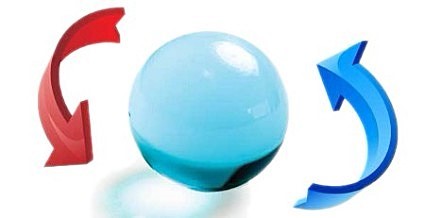
Without a control mechanism, a refrigeration unit will continue to cool until it reaches its maximum chilling capacity. In other words, after the chiller satisfies its process load, it probably will generate additional cooling.
Compressor cycling is one method to control the level of cooling of a refrigeration unit. It involves the use of a thermostat and the predetermined refrigeration temperature “set point”. When cooling reaches the set point, the thermostat interrupts this potential run-away cooling and stops the compressor from circulating refrigerant through the system.
Without the compressor off, the coolant circulation pump continues to operate. At the same time, the process keeps on generating the heat, increasing the temperature. Once detected, the thermostat calls for cooling by energizing the compressor. This thermostatic control of turning the compressor on and off according to the temperature “set point” is called “compressor cycling”.
The main drawback of compressor cycling is over-use of the compressor for non-productive purposes, or “rapid cycling”. This condition is particularly significant when the process heat load is much less than the chiller capacity.
Rapid cycling’s greatest impact occurs when the compressor restarts. As the compressor’s electric motor turns on, a momentary and large current spike occurs to overcome friction demands – often 600% more than normal. This spike causes the motor windings to overheat. If allowed to operate in this condition for prolonged periods, the overall wear of the electric motor will cause premature failure. The failure often results in electric motor burnout.

Another method of heat balancing is capacity control through compressor cylinder unloading. In this case, a thermostat energizes a solenoid (or solenoids if there are multiple cylinders in the compressor) that forces the discharge valve to stay open. Since the cylinder chamber opens to the discharge manifold, no compression of the refrigerant can take place. The result is a drop in refrigeration capacity that is in direct proportion to the number of cylinders being “unloaded”. The torque on the electric motor reduces, resulting in lower energy consumption.
Cylinder unloading is most desirable as a method of capacity control since it balances a chiller’s capacity to the processing load and saves energy.
The traditional method of reducing refrigeration capacity to match the heat load – compressor cycling, hot gas bypass, cylinder unloading, water regulation, and fan cycling – is useful in dealing with only a part of the extra capacity. In addition, most methods (excluding cylinder unloading) have a negative impact on the service life of the compressor, the most expensive component in a refrigeration system.
The heat balancing problem may be more effectively managed from a different perspective – that of pragmatic solutions. A portion of excess refrigeration capacity can be put to useful work, such as air conditioning.
In principle, redirection would come from a tap in the refrigerated water supply to air cooling. The new line can route a small amount of water through a fan coil unit. The fan coil unit consists of a finned tube air-to-water heat exchanger (like an automobile radiator) and a fan (or blower). A small amount of chilled water circulates through the fan coil. When air passes over this coil, the result is cool refrigerated air.
This “free” air conditioning can be used for process cooling or cooling of the operator workspace near the equipment. On a larger scale, a central chilled water system can produce plant-wide air conditioning at relatively little expense by strategically locating fan coil units where machines and operators are stationed.

It is common practice in the plastics industry to size a chiller for mold cooling where the actual output of the chilled water system is greater than the process heat load. This practice started when plastics manufacturers opted to configure their production lines in multiples of five tons. The associated process cooling requirement simply parallels these multiples.
More cooling capacity may also exist as a safety margin. Plastics manufacturers frequently select the “next higher” 5-ton refrigeration to ensure that heat removal from the molds is complete. This further adds to the chiller capacity previously caused by the 5-ton multiples of the production lines.
Control of the additional chiller capacity is imperative. Left unchecked, the process cooling system can experience damage from “overcooling” or “freeze-up”. Heat-balancing methods ensure that the chiller’s capacity matches the process heat removal requirements.
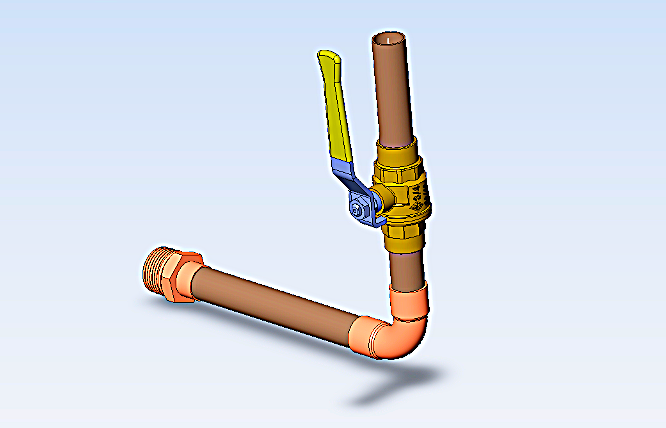
A hot gas bypass valve meters hot refrigerant gas into the evaporator downstream of the expansion valve. The result is a reduction in the capacity of the refrigeration circuit. Its use is to supply the compressor with a continuous full load while the chiller is handling the partial load conditions. The valve is particularly important when operating a semi-hermetic compressor since the compressor must receive a full amount of refrigerant for motor winding cooling.
Normally, the compressor adds energy to the refrigerant by increasing its pressure and temperature. The resulting hot gas goes to the condenser. The condenser removes heat from the gas and allows it to pass to the thermal expansion valve (TXV) as a liquid. This flow path changes with a hot gas bypass. As the compressor satisfies the processing load, water begins to over-cool. A thermostat senses this drop in temperature. At a preset temperature, the thermostat opens an electric solenoid hot gas bypass valve allowing refrigerant to take the path of “least resistance”. Least resistance is the hot gas bypass.
A portion of the refrigerant bypasses the condenser and the TXV valve. The un-condensed gas mixes with the refrigerant that has passed through the TXV. Since the mixture of liquid and gaseous refrigerant loses some capacity to remove heat, a “freewheeling” occurs: without heat removal from the refrigerant, the water in the chiller begins to rise in temperature. The thermostat detects this temperature increase in the chiller and closes the bypass valve when water reaches the set temperature. In this way, the hot gas bypass prevents the compressor from short cycling when the chiller operates under partial load conditions.

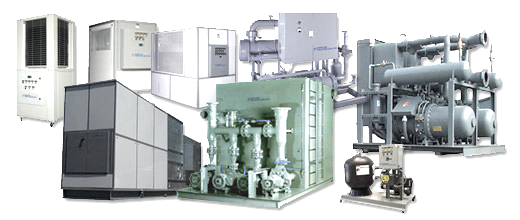 Cooling Technology’s full line of custom designed products includes:
Cooling Technology’s full line of custom designed products includes:
To learn more about these solutions, please contact Climate Technologies.
We are a value added integrator with deep technical knowledge, engineering know-how, and many years of experience solving temperature, humidity, refrigeration and environmental challenges for commercial and industrial applications.
Climate Technologies Corp.
23935 Research Drive
Farmington Hills, MI 48335 USA
Phone: 248-477-2020